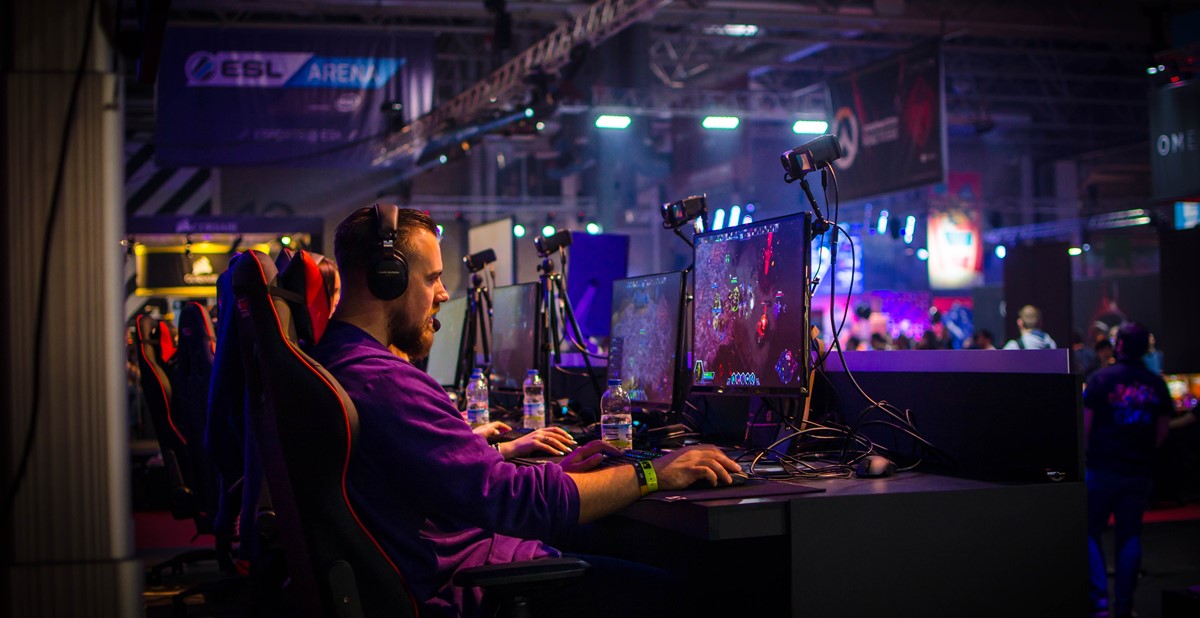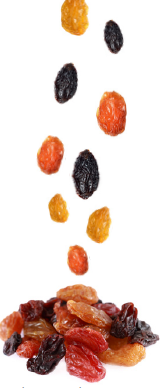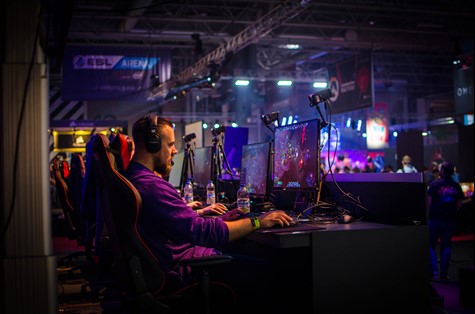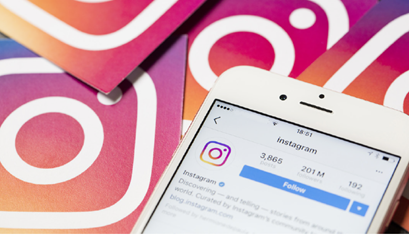Fast Forward: Taking It To The Streets

Brandable
Taking It To The Streets
Domino’s paves its way to greater market influence.
 For Domino’s pizza and products to arrive at its customers’ doorsteps, someone needs to hit the road—whether it’s the Domino’s deliveryman, the UberEats driver or the customers themselves. And it’s no secret that people dislike potholes. They’re inconvenient, they wear down tires, they can complicate or delay the delivery process—and, most importantly, they can ruin a perfectly good pizza. According to the American Automobile Association, potholes cost U.S. drivers upwards of $3 billion annually in repairs. So, Domino’s thought of a solution to fix these rocky roads and ensure faster, safer pizza deliveries.
For Domino’s pizza and products to arrive at its customers’ doorsteps, someone needs to hit the road—whether it’s the Domino’s deliveryman, the UberEats driver or the customers themselves. And it’s no secret that people dislike potholes. They’re inconvenient, they wear down tires, they can complicate or delay the delivery process—and, most importantly, they can ruin a perfectly good pizza. According to the American Automobile Association, potholes cost U.S. drivers upwards of $3 billion annually in repairs. So, Domino’s thought of a solution to fix these rocky roads and ensure faster, safer pizza deliveries.
As part of a new advertising campaign, Domino’s corporate employees asked customers to nominate localities that needed repair. The company created a microsite, www.pavingforpizza.com, where customers could submit nominations and check on progress. Using these nominations, Domino’s offered grants to select towns and cities nationwide to fix their roadways and market its infrastructural campaign, “Paving for Pizza.” After each road was completed, Domino’s added its spray-painted logo onto the pothole-free streets. This campaign piggybacked off of an earlier Domino’s campaign that offered customers “carryout insurance”— the option to exchange pizzas that were damaged during transit.
During the first week of the campaign, Domino’s received 47,197 nominations for repairs, and as of November 2018, the company had awarded grants to 100 towns. So far, Domino’s has paved roads in 16 locations, with plans for an additional nine and an overall goal to reach all 50 states. From June through November 2018, the company had also received 1.1 billion media impressions, while the microsite received an additional 170,000 requests for repairs, with 500,000 total website hits from 16,000 ZIP Codes. The company was proud of the results, to say the least. And customers were, too—especially their taste buds.
––––––––––––––––––––––––––––––––––––––––––––––––––––––––––––––––––––––
Selling Point
Back To The Good Ol’ Days
Sun-Maid rebrands its dried fruit products to attract Millennials.
 It’s hard to forget those tasty, California sun-dried raisins, packaged in a red box that now seems small, but once appeared large in tiny hands. Sun-Maid’s dried fruit snacks were a childhood staple for many, including Millennials. But over time, Millennials have seemed to move on from the joy they experienced savoring these delicious treats as children. But Sun-Maid recently devised a plan to win back its childhood customers.
It’s hard to forget those tasty, California sun-dried raisins, packaged in a red box that now seems small, but once appeared large in tiny hands. Sun-Maid’s dried fruit snacks were a childhood staple for many, including Millennials. But over time, Millennials have seemed to move on from the joy they experienced savoring these delicious treats as children. But Sun-Maid recently devised a plan to win back its childhood customers.
Recently, much of Sun-Maid’s customer base has included older adults. According to Harry Overly, Sun-Maid’s newly appointed CEO, the company was not sufficiently marketing to older children, teenagers or even adults, neither were they communicating with these groups to determine their needs. Even though the company may have missed the mark with Millennials, Overly says the company wants to become relevant to their children. To draw Millennials to purchase its products for their families, Sun-Maid—which describes itself as a “timeless” brand—developed a marketing campaign based on nostalgia, with one advertisement reading, “Remember childhood? Don’t forget it never left.” The plan is designed to target growth of $100 million over the next five years.
In the midst of this campaign, Sun-Maid is also rebranding its sour raisin snacks, which were introduced to market in 2017 and include watermelon, strawberry, mixed berry and grape flavors. The company is also experimenting with new snack items, like snack packs containing dried fruits and nut butters, along with organic products, yogurt-covered fruit and cinnamon swirl raisin bread.
––––––––––––––––––––––––––––––––––––––––––––––––––––––––––––––––––––––
Market Share
Getting In The Game
For greater exposure, brands look to advertising in esports.

For gamers, the time is now—and for brands looking to reach this pool of some 2.2 billion worldwide players, there’s no better time to tap into this ever-growing and constantly changing market. More and more people are playing video games, whether traditional or online. Online games can be downloaded, oftentimes for a fee, and played in real time against real players. Unlike traditional video games, players are no longer solely battling against the computer, but each other, making for a competitive, fast-paced experience. Every game is different, but some of the most popular games attract players of all ages, from all demographics, residing all over the world. This presents an immense opportunity for brands looking to penetrate the gaming sphere and offer their products to these gamers and fans.
To provide some perspective, there are currently about 150 million Americans who play video games, which equates to nearly half of the total U.S. population. One of the most popular online video games is Fortnite. Introduced to market by Epic Games in 2017, Fornite is a battle royale-style game that invites players to compete against each other or on teams. Worldwide, this free game attracts some 40 million unique users each month, many of whom spend an average of $84.67 on in-game purchases like character skins (costumes for their avatar) and gliders (a virtual flying apparatus), according to Fortune. The average Fortnite player also dedicates an average of six to 10 hours per week to playing the game, and for those who turn pro, this number can be much higher.
For promotional products companies looking to penetrate this space, there is limitless opportunity. Many popular online games have a cult-like following of people who also purchase branded merchandise associated with the game. Production and gaming companies, competitors and fans and gaming tournaments are constantly on the lookout for new branded goods to offer consumers. There’s currently a host of products available for Fortnite fans, like apparel, wall art, coasters, inflatables, action figures, fidget spinners and coloring books.
Promotional products companies can also offer products designed to promote gaming events. An even more popular game, League of Legends—a free-to-download game with some 80 million players, 27 million who play the game daily—sold out the more than 18,000 seats in New York’s Madison Square Garden for two consecutive nights. This game also has its own set of branded merchandise, which was sold throughout the event.
Video game companies, whether online or traditional, have had a long relationship with promotional products. With dedicated fans eager to sport clothes or rock accessories featuring their favorite avatar or game slogan, these products are ones that will be treasured by this growing group. Promotional products have even been found to increase the sale of games by drawing raving attention to a new character, feature or aspect of the game, yielding higher in-game purchases. And with 2,711 gaming companies in the United States, according to the Entertainment Software Association, and hundreds of events scheduled annually, there’s no shortage of potential in this market.
Who’s The Average Gamer?
- The average male video gamer is 32 years old, and the average female gamer is 36 years old
- 45 percent of gamers in the United States are women
- 64 percent of households own a device used to play video games, with an average of two gamers per household
- 60 percent of Americans play video games every day
- Contrary to popular belief, more adult women play video games than teenage boys; 33 percent of women over the age of 18 compared with 17 percent of males under the age of 18
- 46 percent of frequent gamers say that gaming helps their family spend more time together
Source: Entertainment Software Association
––––––––––––––––––––––––––––––––––––––––––––––––––––––––––––––––––––––
To Game Or Not To Game
Paul June, with Anaheim, California, supplier Mobile Edge, shares trends about the ever-growing market of esports.
 PPB How have you used promotional products to serve the gaming industry?
PPB How have you used promotional products to serve the gaming industry?
June Mobile Edge has been at the forefront of producing promotional products used by the gaming industry for more than 15 years. We work with Alienware and Razer to produce a wide range of gaming bags, backpacks and accessories, including apparel for Alienware, that are used as promotional products. In 2017, we began producing our own line of Core gaming products, which features award-winning bags and mobile power accessories.
Virtually all the products Mobile Edge produces can be decorated with a company logo via a custom patch (molded 3D and digital print available), 5,000-stitch embroidery or vinyl stickers. We even have our own corporate premiums division that specializes in working with companies and other organizations to produce highly-desirable, quality promotional items for their employees, members and clients.
PPB Gamers have the reputation for being hyper-dedicated to their skill and the games they play. Does this affect the popularity of promo products?
June To the extent that games are hyper-dedicated to their craft, we also believe they’re hyper-dedicated to getting the right bag with the right quality to protect all of their gear. We like to think this hyper-dedication is what drives many gamers and companies serving the gaming industry to seek out the kinds of quality promotional products Mobile Edge produces.
PPB Have you seen products translate into higher in-game purchases, or generate more excitement around a specific element of a game?
June One of the many unique aspects of our Core Gaming Backpacks is that two of the three versions come with Velcro® panels. This allows gamers, esports teams and even their fans to create their own patches and display them proudly on their packs. In fact, we’ve worked with a number of companies and organizations to create custom patches for events and teams, which is a great way to generate excitement. I can easily envision a Core Gaming Backpack completely covered with eye-popping event and team patches. That would be pretty cool.
PPB Can you share with us a unique promotional campaign that you helped execute within this industry?
June Mobile Edge ran a Kickstarter campaign in August to September 2017 to launch the Core Gaming Backpack. Not only did this campaign help generate funding to develop prototypes and launch the new product line, it also helped us to connect with people in the gaming industry—including gamers, esports teams, fans and various esports organizations—so we could hear from them firsthand how our products impact them and how we could make our products even better! It was a very rewarding and memorable experience.
PPB Where do you think the future of gaming and esports is headed? Do you see any major changes or disruptions?
June The global audience for esports, including gamers and fans, was expected to reach 380 million people in 2018. That’s more than the entire population of the United States. The annual revenue for esports is projected to be $1.5 billion by 2020. Clearly esports and gaming is a big deal, and it’s growing.
Just last year, high schools and colleges throughout the United States began introducing esports as official programs that esports athletes can “letter” in. That’s pretty amazing. Esports is also being featured on television, with the broadcast of tournaments and events. With all this interest, it’s easy to imagine that it won’t be long before esports revenues begin to rival that of some of our more traditional sports leagues, such as the NBA and NHL. For example, in 2017, the NHL took in $4 billion. Esports is already not too far behind that level.
As for disruptions, it’s clear the opportunities that an esports athlete has (or will soon have) are likely to one day rival those of participants in these other, more-traditional sports. Pretty soon, the highest paid athlete in the world might not be a baseball, soccer, or football player, but a gamer.
––––––––––––––––––––––––––––––––––––––––––––––––––––––––––––––––––––––
Tech Talk
Gaining Followers, Gaining Business
Strategies for brands to gain a following on Instagram.
 Instagram isn’t just a place to share pictures of aesthetic dishes you’ve ordered, marvelous sunsets you’ve seen and sun-kissed feet poking out of the sand during a tropical vacation. Far more than what we encounter on our personal timelines, Instagram is a social media platform that brands can use as a marketing tool to reach, interact with and promote to their consumers. With more than one billion users worldwide, there’s also no cap on your brand’s potential to reach target clients, near and far.
Instagram isn’t just a place to share pictures of aesthetic dishes you’ve ordered, marvelous sunsets you’ve seen and sun-kissed feet poking out of the sand during a tropical vacation. Far more than what we encounter on our personal timelines, Instagram is a social media platform that brands can use as a marketing tool to reach, interact with and promote to their consumers. With more than one billion users worldwide, there’s also no cap on your brand’s potential to reach target clients, near and far.
But certainly, there’ll be no ROI on Instagram if your brand’s profile is lacking followers. Here’s a few tips that are sure to bolster your social media rep.
Do Your Homework. Instagram has many layers to it. Before you invest in a social media account, campaign or even dedicated employee, it’s important to know how the platform works. Instagram is organized according to algorithms, which determine where a post will appear on users’ timelines and whether it will be featured on the Explore page (a general search page). To master the app, familiarize yourself with its many functions.
Download An App To Track Stats. If you’re in the midst of a client’s order or a large project, you’d want to check on the progress, right? Simply downloading Instagram alone, or any social media platform, will not suffice. There’s a host of apps designed to track your social media analytics, like SimplyMeasured, a web-based report that collects analytical data, in addition to information about top followers, filters and best posting times for accounts with up to 25,000 followers.
Create A Trending Hash Tag. Instagram has a feature that enables users to track and follow hash tags, as opposed to only profiles. Select a hash tag that is relevant to your business or campaign and use this on every post so interested users can follow your content. Snack food company Lay’s used a #DoUsAFlavor hash tag to market a campaign that asked customers to suggest new flavors, for example, while Coca-Cola used the hash tag #ShareACoke to market its popular Share-A-Coke campaign.
Invest In Instagram Ads. Instagram is a free service, but if you’re looking to rise in the ranks, you may have to invest some capital. When you create a business profile on Instagram, there is a feature that permits users to develop advertisements using selected photos and text. This can be used to increase awareness about your brand while drawing more followers.
Add An Instagram Widget To Your Website. To encourage more people to follow your page, download an application that permits Instagram to appear on your company’s homepage. This makes for a cohesive experience for potential clients, who are able to access your Instagram account from your website and vice versa. If your company manages other social media accounts, the same should be done for them, too.
Pay Attention To The Visuals. On photo- and video-heavy platforms like Instagram, a picture is worth everything. Your company may offer life-changing products, but if the photos are grainy, unfocused or unappealing, they may not receive the attention—or the revenue—that’s deserved. If your company deems it necessary, invest in a skilled social media employee or a professional photographer to ensure each post is on point.
Make—And Follow—A Content Calendar. To build a following, you’ll need to post content consistently. To remain organized, develop a content calendar with your team that outlines everything to be posted on social media within a set period—i.e., daily, weekly, monthly, etc. This way, your social media point person can plan the photos, copy and hash tags accordingly. (And always remember to use spellcheck.)
Engage With Users Who Post To Your Page. If you receive a comment, respond. If you receive a message, answer as soon as possible. In addition to serving as a marketing platform, Instagram provides a way for users to interact with your brand. This strategy eliminates the barrier between companies and customers by facilitating a direct-to-consumer tool. Build your reputation by being a highly responsive brand, as it’ll be highly valued by your customers.
––––––––––––––––––––––––––––––––––––––––––––––––––––––––––––––––––––––
Water Cooler
Going ‘Green’
As the cannabis industry gains popularity, promotional products draw customers to dispensaries.
 With the sweeping legalization of recreational marijuana that has been enforced in 10 states and the District of Columbia, the cannabis industry is anticipated to skyrocket this year. In 2018 alone, the industry saw immense success, garnering $10 billion worth of investments, according to CNN, and creating some 160,000 jobs, according to Green Entrepreneur. By the end of 2019, the industry is anticipated to be worth more than $16 billion and by 2022, it’s projected to add some 340,000 full-time jobs to market and produce more than $75 billion in annual revenue. For recreational dispensaries and marijuana supporters in particular, “budding” businesses are showing interest in using promo products to draw attention to their services.
With the sweeping legalization of recreational marijuana that has been enforced in 10 states and the District of Columbia, the cannabis industry is anticipated to skyrocket this year. In 2018 alone, the industry saw immense success, garnering $10 billion worth of investments, according to CNN, and creating some 160,000 jobs, according to Green Entrepreneur. By the end of 2019, the industry is anticipated to be worth more than $16 billion and by 2022, it’s projected to add some 340,000 full-time jobs to market and produce more than $75 billion in annual revenue. For recreational dispensaries and marijuana supporters in particular, “budding” businesses are showing interest in using promo products to draw attention to their services.
In light of the legalization movement, many companies have started selling marijuana merch direct to consumers, who are pleased to acquire products for such a timely issue—and one they passionately support. According to the Pew Research Center, 62 percent of Americans—six out of 10 people—say they support the legalization of marijuana; a trend that’s majorly supported by Millennials (74 percent) and Gen Zers (63 percent) and is gaining more popularity with Baby Boomers (54 percent) and the Silent Generation (39 percent).
The marijuana industry, like the tobacco industry, is highly regulated in terms of advertising, with the inability to use traditional methods, like TV and radio. This limits dispensaries to rely largely on foot traffic and word of mouth to market their brands, aside from social media. Most states have their own advertising regulations when it comes to marketing cannabis, but when and where legal, dispensaries are looking to promotional products to sell in-store to customers age 21 and older. There has been focus on reinventing the perception of marijuana use, with sophisticatedly designed promotional products being used to disrupt the idea of the stereotypical “lazy stoner.” Popular items to consider include apparel, like hoodies and tees, tote bags, decal stickers and mugs, and marijuana-related items, like ash trays and grinders.
Promotional products businesses that serve clients in the cannabis industry may also be interested in attending related conferences and trade shows, where they can further market their products. Some of the upcoming trade shows include the Cannabis & Hemp Expo, April 26-28, 2019 in Edmonton, Alberta, Canada; Canna Grow Expo, August 17-18, 2019 in Palm Springs, Florida; and the California Cannabis Business Expo, October 8-9, 2019 in Long Beach, California.
––––––––––––––––––––––––––––––––––––––––––––––––––––––––––––––––––––––
Danielle Renda is associate editor of PPB.

